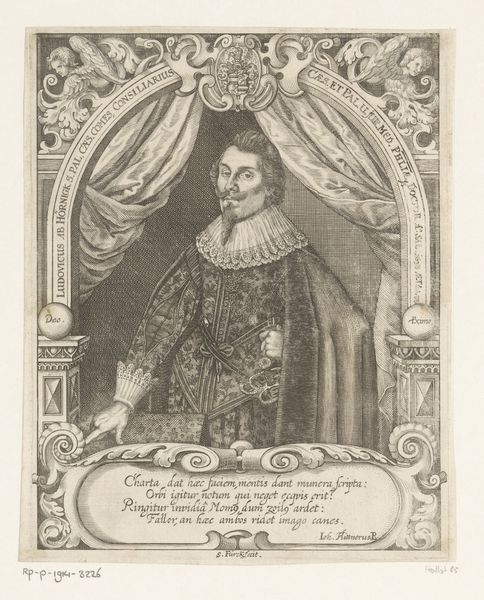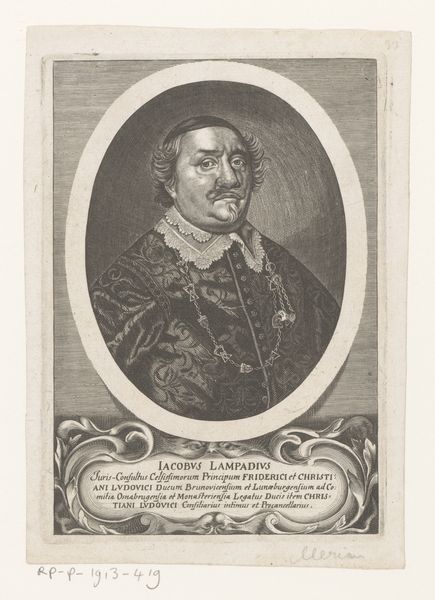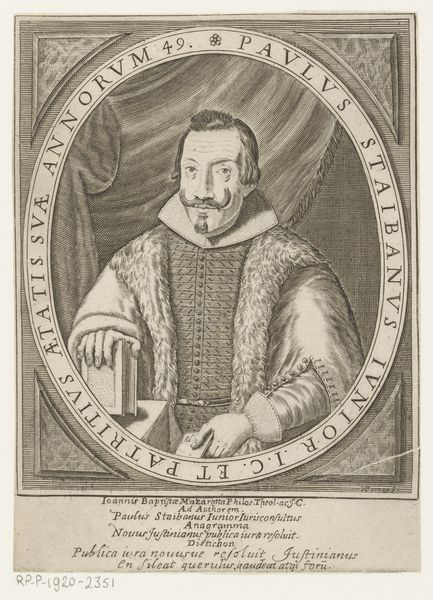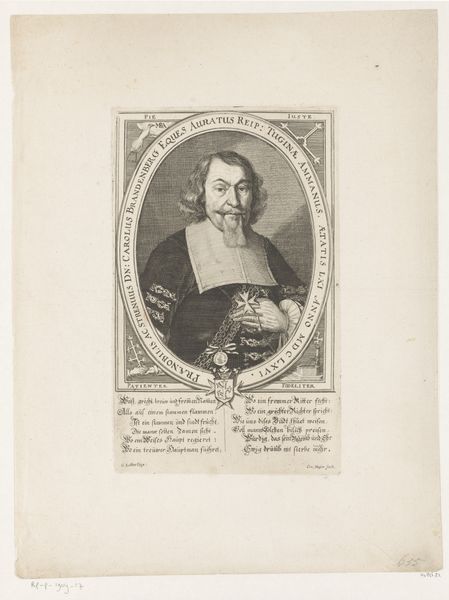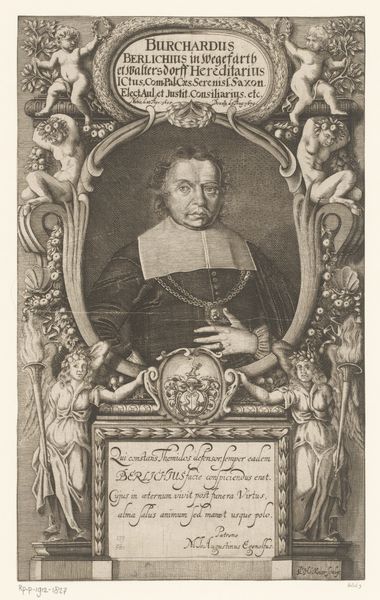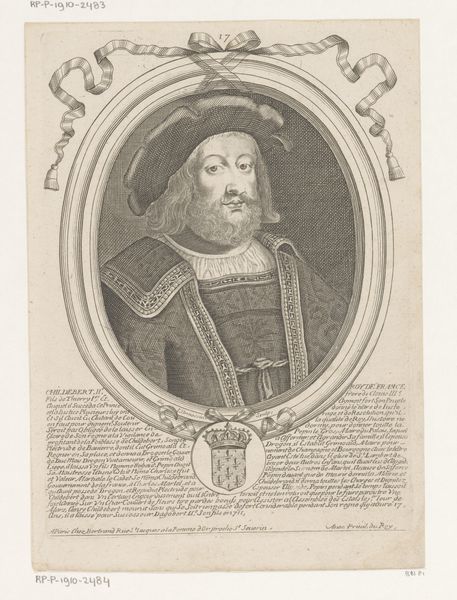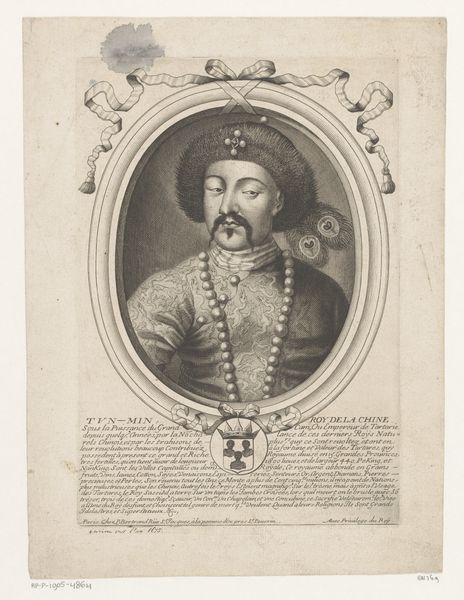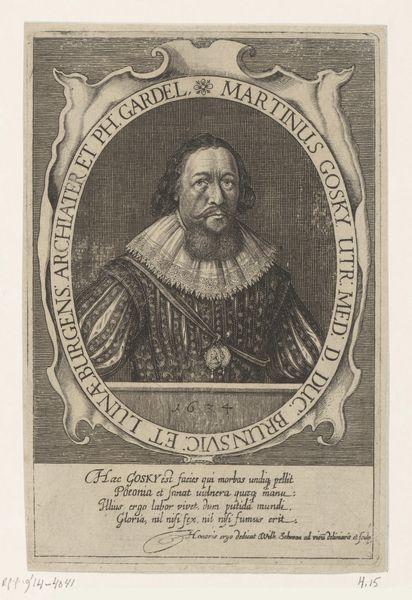
intaglio, engraving
#
portrait
#
baroque
#
intaglio
#
old engraving style
#
history-painting
#
engraving
Dimensions: height 235 mm, width 148 mm
Copyright: Rijks Museum: Open Domain
Curator: This intaglio print, currently residing at the Rijksmuseum, presents a "Portret van Martin Zahn," created sometime between 1657 and 1720 by Johann Alexander Böner. What are your initial thoughts on encountering this engraving? Editor: My first impression is somber. The detail is striking, especially the ruff and his controlled gaze. The texture of the cloak almost feels tangible, and he seems quite proud and stoic. The use of line is delicate, but its tonal values create a rather serious atmosphere, don't you agree? Curator: Absolutely. As a piece rooted in the Baroque era, such depictions were carefully constructed to project authority and status. The print acts as an emblem of Zahn's social standing. His clothing, his accessories – even the cherubs above the oval portrait – contribute to a narrative of prosperity and reverence within his societal context. Editor: Thinking about it within that social construct, what kind of impact do you think these images would have had at that time? How would the communities of the time interact with this work of art? I find myself wondering what political position this figure held at the time the portrait was printed. Curator: Well, it speaks to the political economy of portraiture. Engravings like this served multiple functions, primarily reinforcing a specific image of power and perpetuating Zahn's legacy. Prints made art accessible to a wider audience, facilitating social mobility, perhaps offering him symbolic capital in both local and broader civic life. Editor: A powerful statement on identity. And that frame surrounding the central figure; it lends such a visual gravitas to the work. He’s not just a person, but a subject being formally presented to society. Looking at him and knowing his origin story helps one appreciate just how art helps influence and mold individuals. It also brings perspective on current-day perceptions, versus his historical representation, no? Curator: Yes, understanding those layers helps deconstruct this work, providing an insight to that complex period. For me, it underscores how identity and representation were being consciously manufactured in the socio-political theater of the Baroque period. Editor: It certainly adds a richer perspective to my initial impression of a stoic portrait. A fascinating piece for sure.
Comments
No comments
Be the first to comment and join the conversation on the ultimate creative platform.
